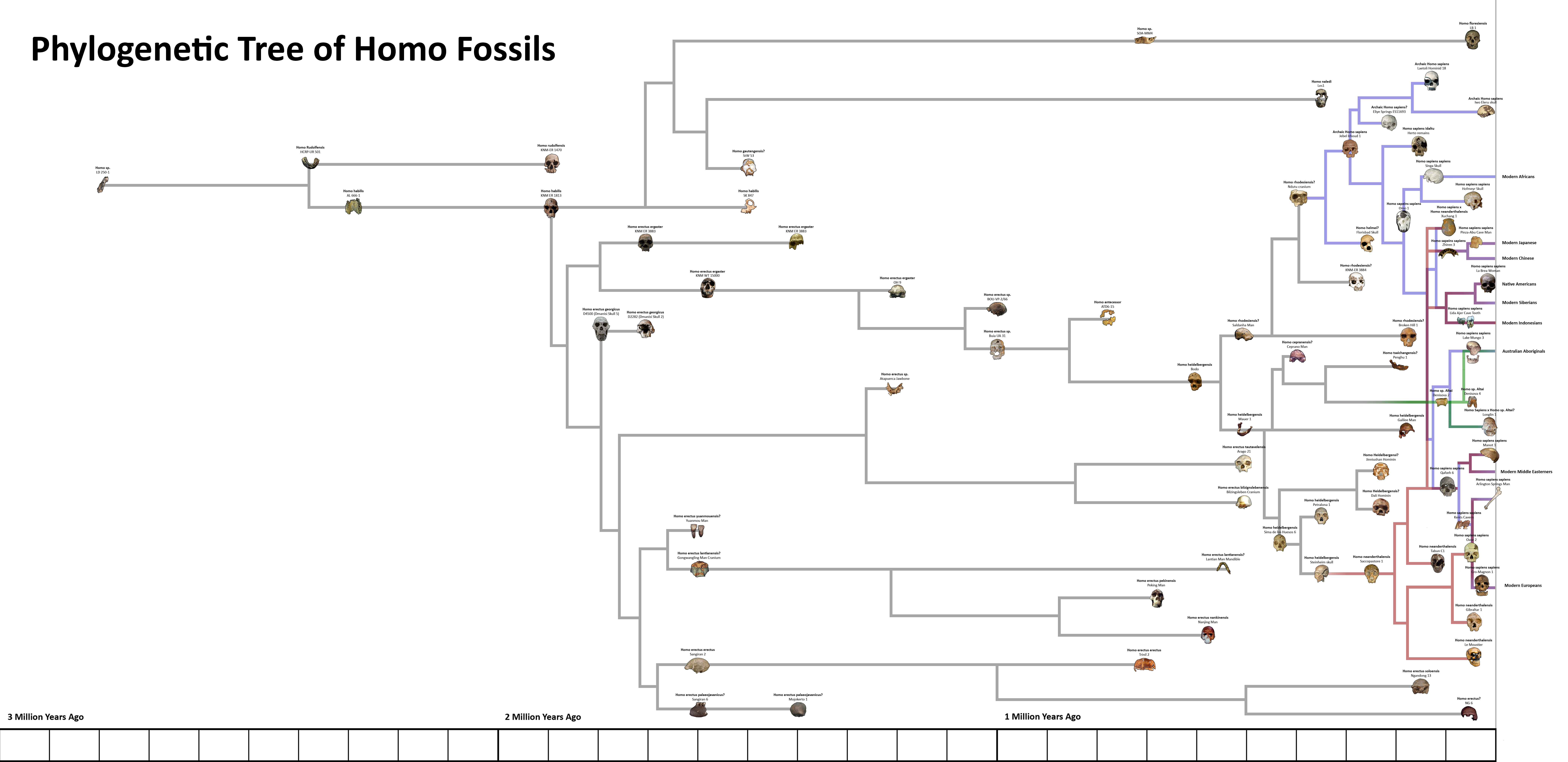HOME | DD
 Paleonerd01 — The macroevolution of the mega-toothed sharks
Paleonerd01 — The macroevolution of the mega-toothed sharks

#evolution #megalodon #palaeontology #paleontology #sizecomparison #carcharocles #obliquus #fossilsharkteeth #carcharoclesmegalodon #extinctshark #fossilshark #fossilsharktooth #sharkevolution #otodusmegalodon #lamnaobliqua #otodusotodusobliquus #otodustooth #otodusobliquustooth #carcharoclesaksuaticus #carcharoclesauriculatus #carcharoclesangustidens #carcharoclessokolovi #carcharoclessubauriculatus #carcharocleschubutensis
Published: 2022-02-27 05:56:07 +0000 UTC; Views: 23151; Favourites: 110; Downloads: 26
Redirect to original
Description
Transitional fossils are succinctly defined as are organisms with characteristics common to both their ancestors and descendants, therefore making them intermediate. The fossil record is full of many such intermediate links, in fact some macroevolutionary lineages contain so many transitional forms that they are essentially complete. However, there are very few lineages that contain a smooth, species to species transition, often instead a lineage contains closely related genera that accumulate a succession of derived characteristics over geologic time. The obliquus-megalodon lineage is unique in that it contains an incredibly smooth transition of intermediate species; this transition is so perfect that it is often difficult to decern when one species stops, and another starts. Therefore, the obliquus-megalodon is the strongest example of macroevolution indicated in the fossil record, marked by the emergence of new derived traits but also the loss of an ancestral trait.
Members of this lineage are Lamniform sharks, these are pelagic, macrophagous predators that greatly diversified following the extinction of the Mosasaurids at the end of the Cretaceous. Gradually the teeth of these sharks acquired serrations and eventually lost their lateral cusplets. This indicates a shift in diet from smaller to larger prey, and a change in feeding strategy from grasping to cutting (Perez et al., 2019). During the Oligocene these sharks greatly increased in body size, likely the result of feeding on baleen whales (Mysticeti) and other moderate to large marine mammals. Despite their success these sharks eventually became extinct, most likely due to a cooling in ocean temperatures and a fall in sea levels during the Pliocene which decreased the diversity of whales and other marine mammals (Boessenecker et al., 2019).
The first stage in the lineage is Otodus obliquus (Agassiz, 1838), this chronospecies evolved in the Danian stage of the early Paleocene and disappeared during the Lutetian stage of the middle Eocene. The teeth of O. obliquus have an unserrated main cusp with large, triangular lateral cusplets, a robust root with a “U” shaped root interlobe, a prominent lingual protuberance of the root, and a “V” shaped chevron scar on the lingual face (Ebersole et al., 2019) (Ehret & Ebersole, 2014). The next stage is O. obliquus var. mugodzharicus (Zhelezko & Kozlov, 1999), this species variety appears briefly in the middle Ypresian stage of the early Eocene. The teeth of O. obliquus var. mugodzharicus are very similar to O. obliquus but possess a partially serrated cutting edge with fine, irregular serrations (Carlsen & Cuny, 2014). This indicates that populations of O. obliquus began feeding on larger prey in the early Eocene, but that serrated teeth did not replace unserrated teeth until the middle Eocene.
The next stage is O. aksauticus (Menner, 1928), this chronospecies is also restricted to the Ypresian stage of the early Eocene. It differs from O. obliquus var. mugodzharicus in possessing coarse, irregular serrations on the cutting edge of the main cusp and the lateral cusplets, these serrations do not continue towards the apex of the crown (Zhelezko & Kozlov, 1999). The next stage is Carcharocles auriculatus (Blainville, 1818), this chronospecies also appeared in the Ypresian stage of the early Eocene but survived until the Rupelian stage of the early Oligocene. The teeth of C. auriculatus differ from the early O. aksauticus by possessing a fully serrated cutting edge, the coarse, irregular serrations however diminish in size towards the apex of the crown (Ehret & Ebersole, 2014).
The next stage is C. sokolovi (Jaekel, 1895), this chronospecies evolved in the Bartonian and survived until the Priabonian stage of the late Eocene. The teeth of C. sokolovi differ from those of C. auriculatus in being larger, possessing a main cusp that is broader at the base, along with uniform serrations along the cutting edge, and small, triangular to rounded lateral cusplets that are irregularly serrated (Adent, 2010). The next stage is C. angustidens (Agassiz, 1843), this chronospecies existed during the Oligocene and primarily differs from the early C. sokolovi in having finely serrated lateral cusplets (Gottfried, 2001). The Oligocene marked the appearance of baleen whales, and this correlates with a general increase in the body size of Lamniform sharks in the obliquus-megalodon lineage.
The next stage is C. chubutensis (Ameghino, 1901), this chronospecies appeared in the Chattian stage of the late Oligocene and survived until the Langhian stage of the middle Miocene. The teeth of C. chubutensis were much broader, had a taller chevron scar on the lingual face, less pronounced lingual protuberance of the root, and the lateral cusplets were not separated from the main cusp as they were in C. angustidens. The final stage is C. megalodon (Agassiz, 1843), this chronospecies evolved in the Burdigalian stage of the early Miocene and became extinct in the Zanclean stage of the early Pliocene. The lateral cusplets were lost in the adult teeth of C. megalodon, allowing it to be distinguished from the early C. chubutensis (Purdey, 2001).
References:
Adent, S., CAPPETTA, H., & TABUCE, R. (2010). A Middle–Late Eocene vertebrate fauna (marine fish and mammals) from southwestern Morocco; preliminary report: age and palaeobiogeographical implications. Geological Magazine, 147(6), 860–870.
Agassiz, L. (1838). “Recherches Sur Les Poissons Fossiles. (Tome III).” Imprimérie de Petitpierre.
Agassiz, L. (1843). “Recherches Sur Les Poissons Fossiles. (Tome III).” Imprimérie de Petitpierre.
Ameghino, F. (1901) “L’age des formations sédimentaires de Patagonie.” Anales de la Sociedad Científica Argentina, 51: 20-91.
Blainville, H. M. D. (1818). “Poissons fossiles.” Nouveau Dictionnaire d'Histoire Naturelle, 27: 310-391.
Boessenecker, R. W., Ehret, D. J.; Long, D. J.; Churchill, M., Martin, E., Boessenecker, S. J. (2019). “The Early Pliocene extinction of the mega-toothed shark Otodus megalodon: a view from the eastern North Pacific.” PeerJ, 7: e6088.
Carlsen, A. W., Cuny, G. (2014). “A study of the sharks and rays from the Lillebælt Clay (Early–Middle Eocene) of Denmark, and their palaeoecology.” Bulletin of the Geological Society of Denmark, 62: 39-88.
Ebersole, J. A., Cicimurri, D. J., Stringer, G. L. (2019). “Taxonomy and biostratigraphy of the elasmobranchs and bony fishes (Chondrichthyes and Osteichthyes) of the lower-to-middle Eocene (Ypresian to Bartonian) Claiborne Group in Alabama, U.S.A., including an analysis of otoliths.” European Journal of Taxonomy, 585: 1-274.
Ehret, D. J., Ebersole, J. (2014). “Occurrence of the megatoothed sharks (Lamniformes: Otodontidae) in Alabama, USA.” PeerJ, 2: e625–e625.
Jaekel, O. (1895) “Unter-tertiäre Selachier aus Südrussland.” Mémoirs du Comité geologique de St, 9(4): 19-35.
Gottfried M. D., Fordyce R. E (2001). “An associated specimen of Carcharodon angustidens (Chondrichthyes, Lamnidae) from the Late Oligocene of New Zealand, with comments on Carcharodon interrelationships.” Journal of Vertebrate Paleontology. 21(4): 730-739.
Menner, V. V. (1928). “The Palaeogene sharks of Mangyschlak, Emba and from the east of Oural.” Bulletin de la Société des Naturalistes de Moscou Section, Géologique, 6(3-4): 291-338.
Perez, V. J., Godfrey, S. J., Kent, B. W., Weems, R. E., Nance, J. R. (2019). “The Transition between Carcharocles Chubutensis and Carcharocles Megalodon (Otodontidae, Chondrichthyes): Lateral Cusplet Loss Through Time.” Journal of Vertebrate Paleontology, 38(6), e1546732-.
Purdy, R. W., Schneider, V. P., Applegate, S. P., Mclellan, J. H., Meyer, R. L., Slaughter, R. (2001). “The Neogene sharks, rays, and bony fishes from Lee Creek Mine, Aurora, North Carolina.” In: Ray, C. E. R., Bohaska, D. J. (2001). “Geology and paleontology of the Lee Creek Mine, North Carolina, III.” Smithsonian Contributions to Paleobiology, 90: 71-202.
Zhelezko, V., Kozlov, V. (1999). “Elasmobranchii and Paleogene biostratigraphy of Transurals and Central Asia. In: Materials on stratigraphy palaeontology of the Urals. Volume 3.” Yekaterinburg: Russian Academy of Sciences, Urals Branch, Uralian Regional Interdepartment Stratigraphical Commission, 324.
Related content
Comments: 2

👍: 0 ⏩: 0

👍: 0 ⏩: 0

























